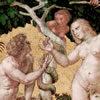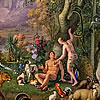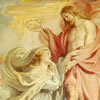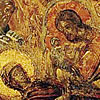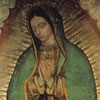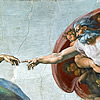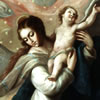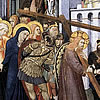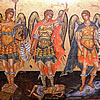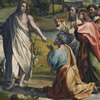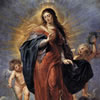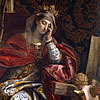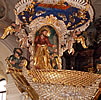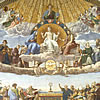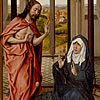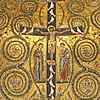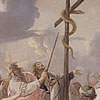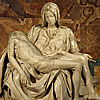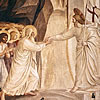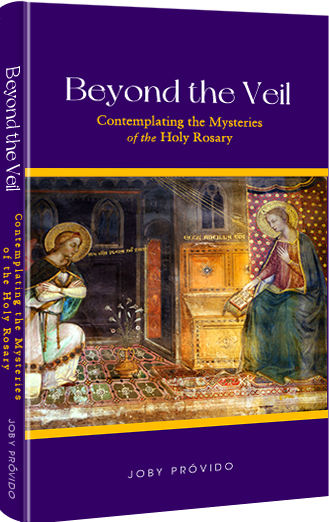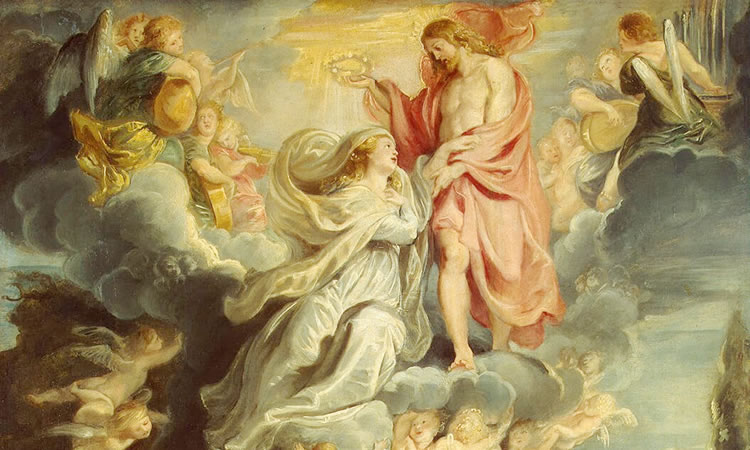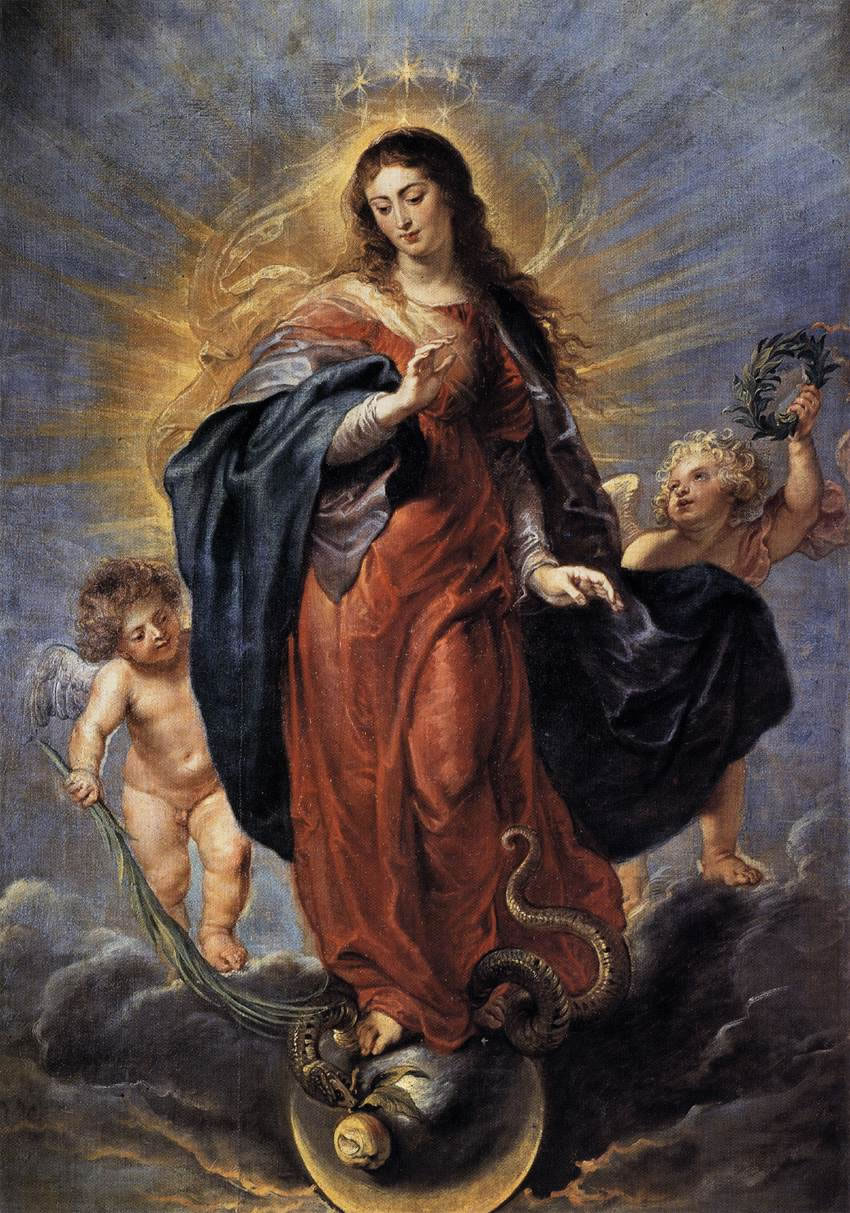

Immaculate Conception
Paintings of the Immaculate Conception have followed a template for several years: Mary is presented to us in the middle of the painting with a crown of stars, draped with a blue mantel, enveloped in shining brilliance, stepping on a snake, and on top of the moon.
Different painters add other elements into this master pattern. In the case of Rubens in this particular painting, he adds two angels. One flaunts a laurel wreath, and the other a palm branch.
While Rubens follows a standard pattern, the symbolism behind is nothing but extraordinary for it explains what it is we believe about the Immaculate Conception. Let us unpack it, lest we miss what the symbolisms mean.
Let’s focus on the serpent right away. In this version of Rubens, the snake has an apple in its mouth. That should immediately transport us to the Garden of Eden when Eve disobeyed God, ate the fruit, and gave it to her husband to eat. It is this act of original sin where we lost our original innocence, as well as all the graces we needed to live the Divine life God always wanted us to have.
This imagery is no accident because the First reading chosen for the Solemnity of the Immaculate Conception comes from Genesis 3:9-20, which is the narration of the Fall. The striking verse in all of this is when God makes a promise. He tells the serpent:
“I will put enmity between you and the woman, and between your offspring and hers; They will strike at your head, while you strike at their heel.”
Genesis 3:15
This is the Protoevangelium – a glimpse of the Euangelion, which is good news of victory. The word to underline in this verse is “enmity.” It isn’t just a dislike for another, but one who is in total opposition! In this image of the Immaculate Conception, Mary is the woman crushing the head of the serpent. But she isn’t just like any other woman; she is a woman who has enmity with the serpent. This can only mean that nothing of the serpent, not its lies, not its works or effects of its works can be associated with Mary. And so, this is the biblical basis of the Immaculate Conception, is it not? For Mary could not have contracted the stain of original sin if she is to have total enmity with the serpent.
We cannot but miss also the Psalm used for the responsorial in this solemnity. It comes from Psalm 98.
“The Lord has made his salvation known: in the sight of the nations he has revealed his justice.
He has remembered his kindness and his faithfulness towards the house of Israel.”
Psalm 98:3
In this Psalm, we cry out in thanksgiving to God for having remembered his words in Genesis – that a he will fashion a woman who will be in total enmity with the serpent. He is merciful and remained faithful to his promise, even if we have broken our relationship with him repeatedly. The subject is not explicit in the Psalm, but we infer that is the act of sending us a woman who is immaculately conceived that fulfills this promise in Genesis. It is no wonder why the angel Gabriel addressed Mary, “Hail, Full of Grace!”
The other elements surrounding Our Lady in the painting moves us from the first book of the Bible, to the last. We are reminded of the Woman in Revelation 12 who is doing battle with a dragon. She is “clothed with the sun, the moon under her feet, and on her head a crown of twelve stars.” This is exactly how Mary is depicted in this painting and all other paintings of the Immaculate Conception. We would probably be accused of imagining things if Mary, herself, did not “paint” herself this way on the Tilma of Juan Diego that has become known as Our Lady of Guadalupe.
It should be noted that the Hebrew word used in Genesis for the serpent is “nahash” that refers to a large snake. It is not some puny garter snake, but a something overwhelming – almost dragon-like. This is what Eve battled with in Eden, and this is the same colossal monster Mary battles in Revelation. It is a marvelous poetic masterpiece by the Holy Spirit.
In this painting by Rubens, the angels depict the final coup de grace. The angel on the right is almost delightful in presenting to us a laurel wreath. In ancient times, it was a symbol of victory – an end to a conflict. When Mary said, “I am the handmaid of the Lord, may it be done to me according to your word,” she consented to become the mother of Christ who is the weapon she would unleash to the world to crush the head of Satan. He is the offspring the Woman that God promised, in Genesis, who would strike the head of the serpent. He would end this conflict.
The angel on the left holds a palm branch, which also symbolizes victory – not just any victory, but a martyr’s victory over death, as well as victory over enemies of the flesh. What a wonderful symbolism in connection with Mary because by allowing Christ to come into the world, she allowed him to purchase for us everlasting life that reverses the effects of original sin. I am not sure if I am seeing more than what Rubens is portraying, but it seems like the angel on the left is actually gloating over the serpent by stroking it with the symbol of victory. I imagine this is what we do, too, every time we say a Hail Mary.
Every time we say the Hail Mary, then, let us remember that she is God’s promised “woman” who has crushed the head of the enemy. She is already victorious, and all we need to be victorious is to is follow her lead, for there is no were else she will take us, except her son – our ultimate prize.



